Leonard Vance
Development of Techniques Enabling Suborbital Small Object Capture Around Low Gravity Asteroids
Dec 18, 2020



Abstract:The exploration of small body asteroids provides direct access to the primitive building blocks of our solar system. Sample and return missions enable chemical and radioisotope studies which not only provide evidence for the formation of the solar system, but also a basic understanding of where resources might be found for future exploitation. The touch-down and sample techniques established by Hayabusa-2 and OSIRIS-REx accomplish this mission by physically touching down on the asteroid and collecting samples into a basket extended via a probe from the bottom of the spacecraft. This technique has been demonstrated to work, but contains a high cost in both mission operations as well as the size and complexity of the collection mechanism itself. This paper explores an alternative sample and return technique by exploiting the recent discovery of regolith particle ejections from Bennu. Particles ejected from the surface of Bennu are typically 1 cm in size and spend several hours in flight, suggesting the possibility that nanospacecraft deployed from the mother-spacecraft could chase down, collect and return with the sample with minimal sensor and delta-V capability. Key aspects of this mission are developed to reduce risk, and an overall mission concept is developed to establish plausibility.
FemtoSats for Exploring Permanently Shadowed Regions on the Moon
Dec 15, 2020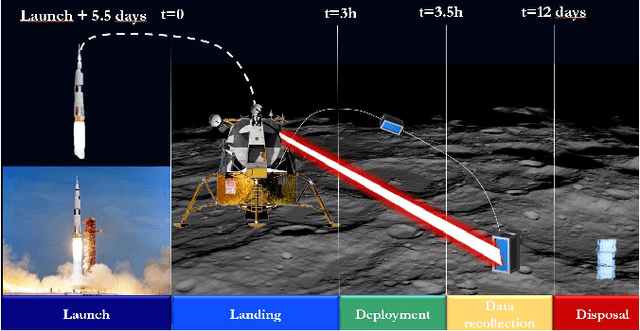
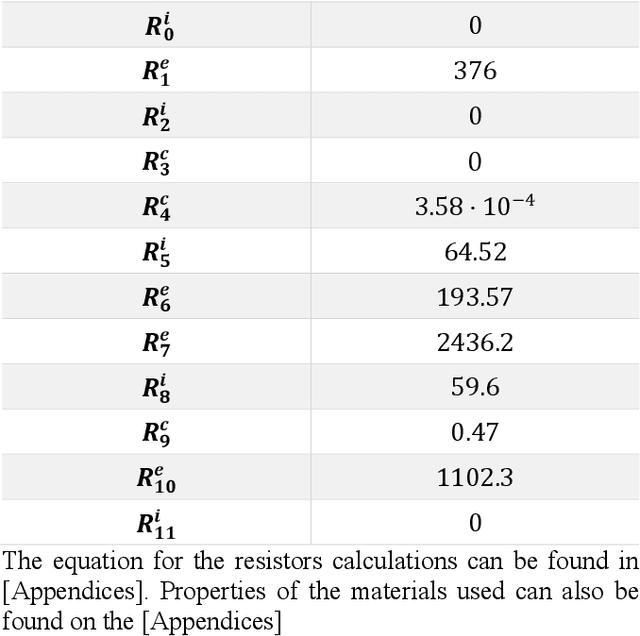
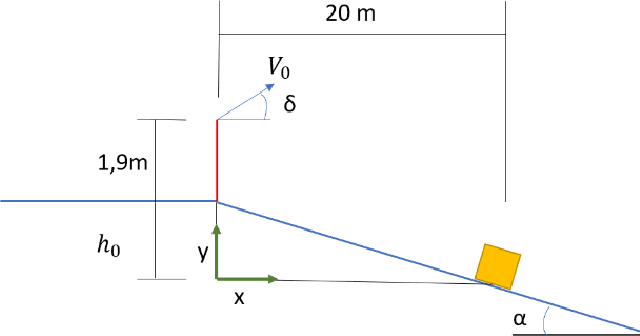
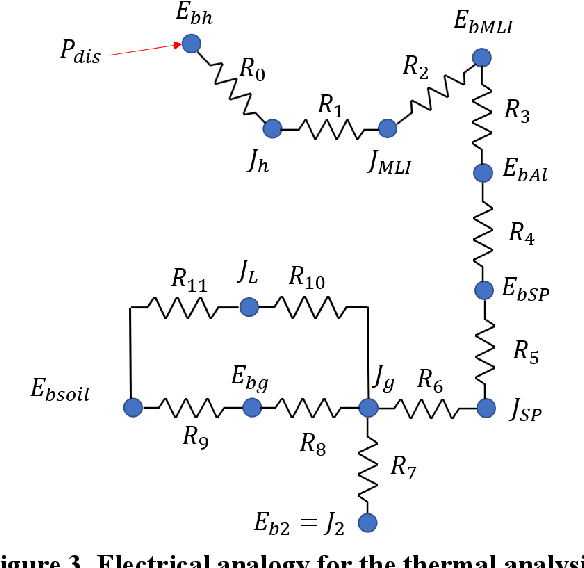
Abstract:The recent, rapid advancement in space exploration is thanks to the accelerated miniaturization of electronics components on a spacecraft that is reducing the mass, volume and cost of satellites. Yet, access to space remains a distant dream as there is growing complexity in what is required of satellites and increasing space traffic. Interplanetary exploration is even harder and has limited possibilities for low cost mission. All of these factors make even CubeSats, the entry-level standard too expensive for most and therefore a better way needs to be found. The proposed solution in this report is a low-mass, low-cost, disposable solution that exploits the latest advances in electronics and is relatively easy to integrate: FemtoSats. FemtoSats are sub-100-gram spacecraft. The FemtoSat concept is based on launching a swarm where the main tasks are divided between the members of the swarm. This means that if one fails the swarm can take its place and therefore substitute it without risking the whole mission. In this paper we explore the utility of FemtoSats to perform first exploration and mapping of a Lunar PSR. This concept was recognized as finalist for the NASA BIG Competition in 2020. This is an example of a high-risk, high-reward mission where losing one FemtoSat does not mean the mission is in danger as it happens with regular satellite missions.
A Spring Propelled Extreme Environment Robot for Off-World Cave Exploration
Mar 19, 2019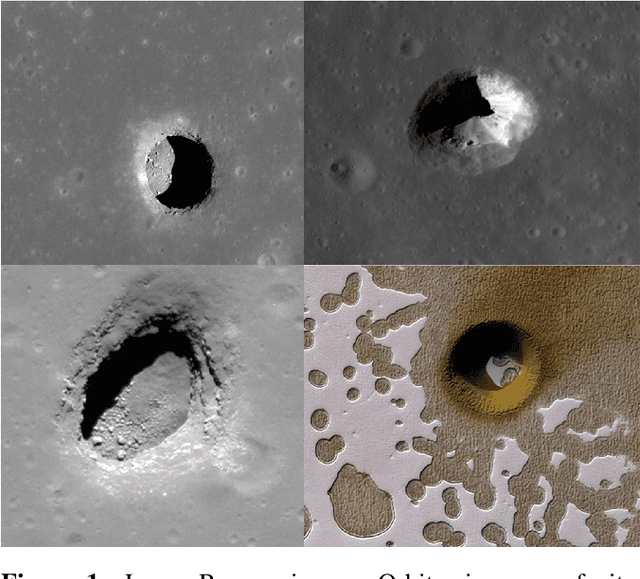

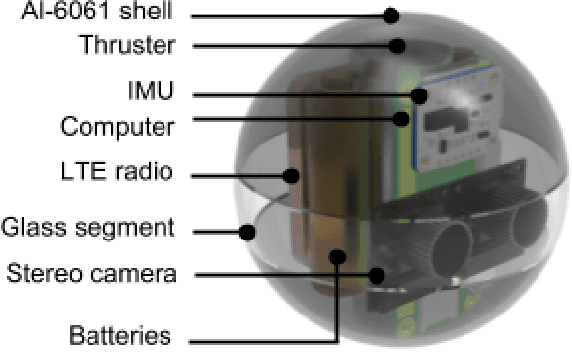
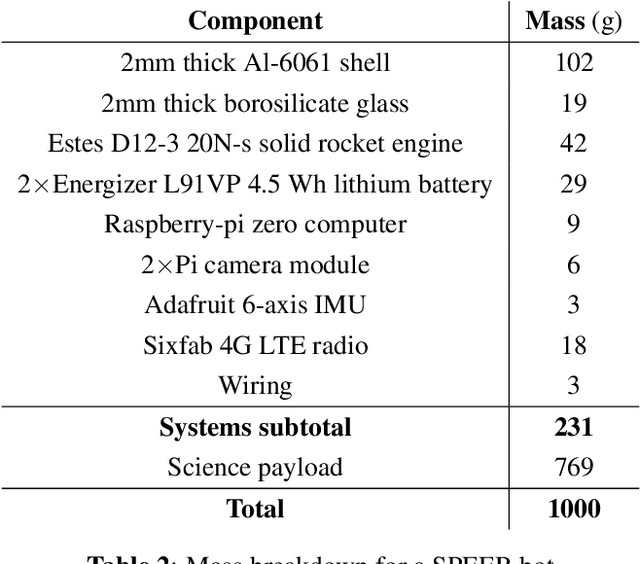
Abstract:Pits on the Moon and Mars are intriguing geological formations that have yet to be explored. These geological formations can provide protection from harsh diurnal temperature variations, ionizing radiation, and meteorite impacts. Some have proposed that these underground formations are well-suited as human outposts. Some theorize that the Martian pits may harbor remnants of past life. Unfortunately, these geo-logical formations have been off-limits to conventional wheeled rovers and lander systems due to their collapsed ceiling or 'skylight' entrances. In this paper, a new low-cost method to explore these pits is presented using the Spring Propelled Extreme Environment Robot (SPEER). The SPEER consists of a launch system that flings disposable spherical microbots through skylights into the pits. The microbots are low-cost and composed of aluminium Al-6061 disposable spheres with an array of adapted COTS sensors and a solid rocket motor for soft landing.By moving most control authority to the launcher, the microbots become very simple, lightweight, and low-cost. We present a preliminary design of the microbots that can be built today using commercial components for under 500 USD. The microbots have a total mass of 1 kg, with more than 750 g available for a science instrument. In this paper, we present the design, dynamics and control, and operation of these microbots. This is followed by initial feasibility studies of the SPEER system by simulating exploration of a known Lunar pit in Mare Tranquillitatis.
Laser Communication and Coordination Control of Spacecraft Swarms
Jan 25, 2019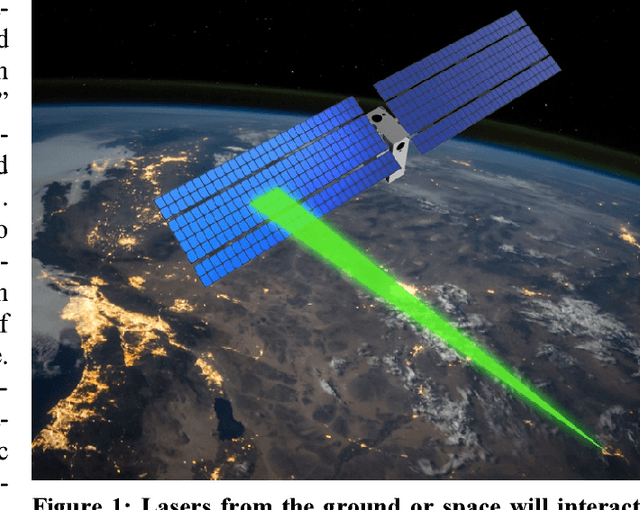
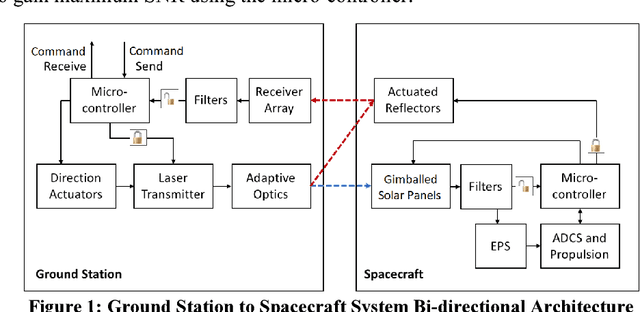
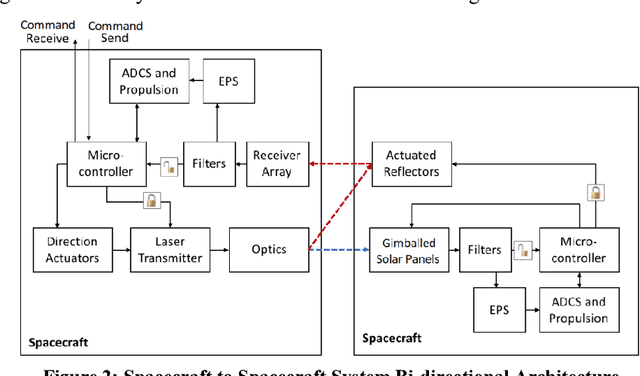
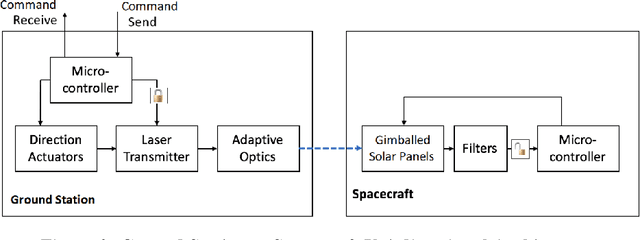
Abstract:Swarms of small spacecraft offer whole new capabilities in Earth observation, global positioning and communications compared to a large monolithic spacecraft. These small spacecrafts can provide bigger apertures that increase gain in communication antennas, increase area coverage or effective resolution of distributed cameras and enable persistent observation of ground or space targets. However, there remain important challenges in operating large number of spacecrafts at once. Current methods would require a large number of ground operators monitor and actively control these spacecrafts which poses challenges in terms of coordination and control which prevents the technology from scaled up in cost-effective manner. Technologies are required to enable one ground operator to manage tens if not hundreds of spacecrafts. We propose to utilize laser beams directed from the ground or from a command and control spacecraft to organize and manage a large swarm. Each satellite in the swarm will have a customized "smart skin" con-taining solar panels, power and control circuitry and an embedded secondary propulsion unit. A secondary propulsion unit may include electrospray pro-pulsion, solar radiation pressure-based system, photonic laser thrusters and Lorentz force thrusters. Solar panels typically occupy the largest surface area on an earth orbiting satellite. A laser beam from another spacecraft or from the ground would interact with solar panels of the spacecraft swarm. The laser beam would be used to select a 'leader' amongst a group of spacecrafts, set parameters for formation-flight, including separation distance, local if-then rules and coordinated changes in attitude and position.
 Add to Chrome
Add to Chrome Add to Firefox
Add to Firefox Add to Edge
Add to Edge